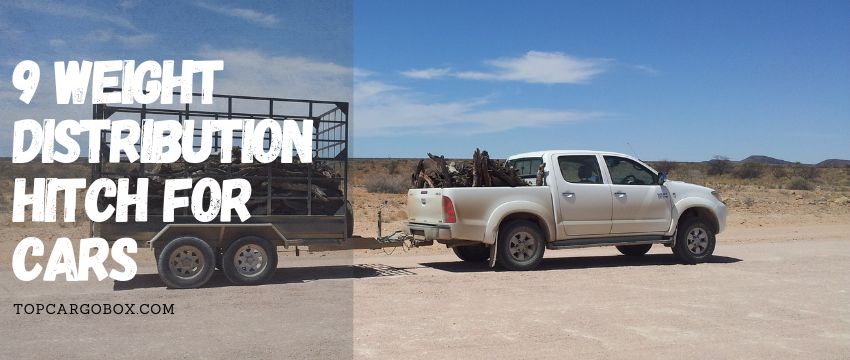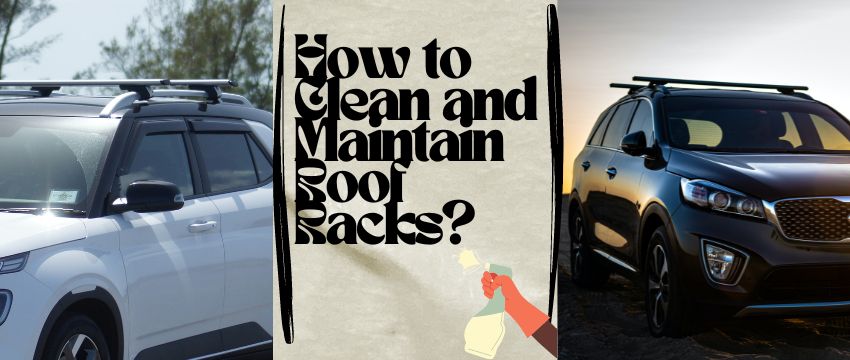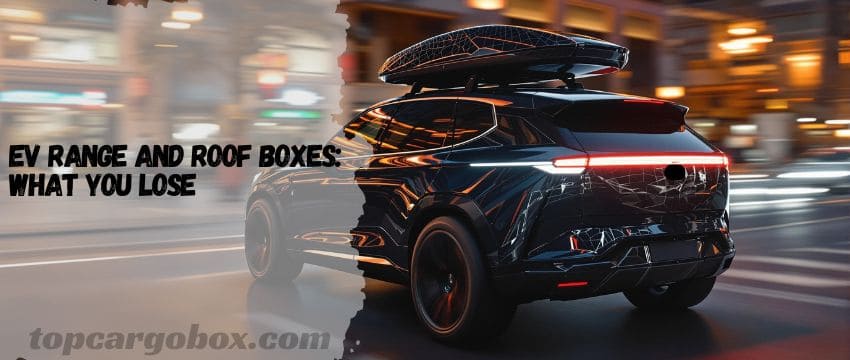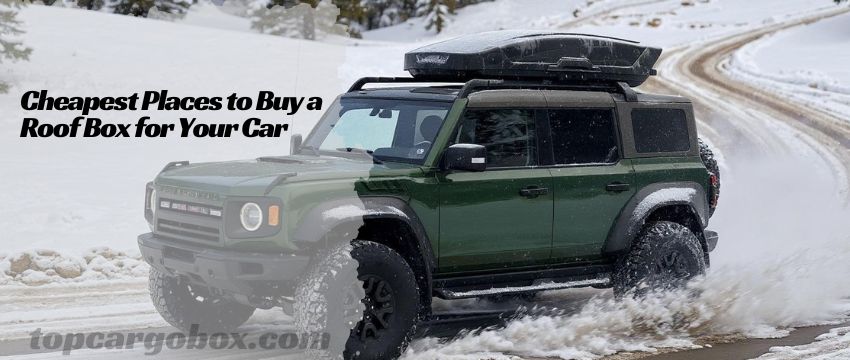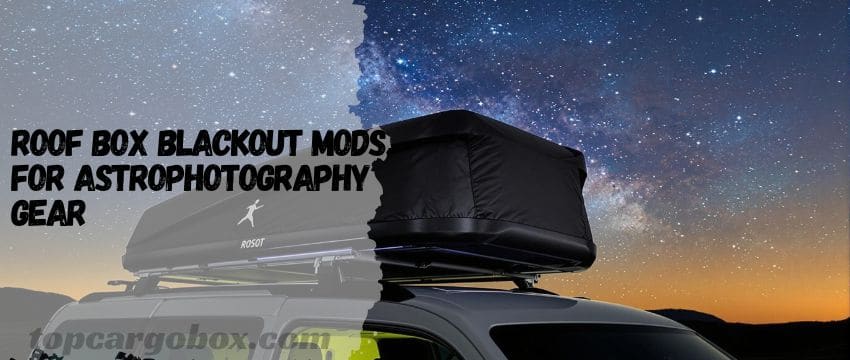What’s up, friend? Driving a leased set of wheels? Nice move – keeps things fresh without the long-term commitment. Bet you’re dreaming up that big family road trip or just drowning in gear that won’t fit in the trunk, right? Totally get it; a roof cargo box seems like the ultimate fix for hauling skis, tents, or enough luggage for a month. Feels like a no-brainer. But then it hits you… that little, stomach-dropping moment: “Hold up… this isn’t actually my car.” Seriously though – what’s the deal? Can you legit strap a giant box onto a vehicle you’re just borrowing? Fair question, and honestly? It’s way messier than a simple yes or no. Getting this wrong could mean the leasing company slaps you with crazy fees later – think hundreds, maybe even thousands, for scratches or dents you didn’t even notice. How’s that for a vacation buzzkill? Before you even think about wrestling that box onto the roof, let’s unpack the real story and every single thing you gotta know to avoid a nasty surprise. No big deal, we’ll sort this out. Let’s tackle this head-on.
Understanding Your Lease Agreement: The Golden Rule
Alright, listen up – toss that owner’s manual aside for a hot minute. Your actual lifeline here? That stack of papers you signed when you leased the car. For real. That contract isn’t just boring fine print; it’s the only rulebook that matters for the next couple years while that car’s in your driveway. Think about it: this isn’t your forever ride you bought outright, where slapping on mods feels kinda like customizing your own sneakers. Nope. Leasing’s more like borrowing your buddy’s seriously expensive, brand-new jacket for a year or two. You wouldn’t just start sewing patches onto their jacket without asking, right?
Of course not – that’d be a major grunt move. You promised you’d return it exactly how you got it, maybe just a little worn in from normal use. Same exact vibe with the leasing company and their car. Mess with it outside those agreed-upon rules – like clamping a giant box on top without permission – and bam, you could be staring down surprise bills for $500, $1000, or even more when you turn it back in. How’s that for a gut punch? They inspect every inch, hunting for any reason to charge you. So, feeling overwhelmed by the legalese? Totally get it. Your absolute first move isn’t shopping for boxes – it’s digging out that lease agreement and figuring out what it actually says you can and can’t do to the roof. Get it in writing. Otherwise, you’re just guessing, and guessing wrong sucks.
- Time to channel your inner detective mode, because this lease agreement isn’t gonna read itself. Seriously, where’d you stash that thing? Buried in the glovebox? Tossed in a drawer? Go grab it – yeah, right now. Flip past the boring stuff and laser-focus on finding sections screaming “Hands Off!” – stuff like “No Mods Allowed,” “Don’t Mess With The Car,” “How We Want It Back,” or maybe “What Counts as Trashed.” Trust me, it’s hiding in there somewhere, probably sandwiched between paragraphs that make your eyes glaze over. Don’t just skim like you’re scrolling feeds – actually read it. Feeling totally lost in the legal mumbo-jumbo? Totally fair, that stuff sucks. Give your leasing company’s customer service a ring – no need to stress. Just hit ‘em with: “Hey, what’s your actual rule about slapping a temporary roof box or racks on my leased ride?” And here’s the non-negotiable part: Get. It. In. Writing. A quick email confirmation from them is your golden ticket, your proof, your “don’t charge me later” shield. Skipping this step? That’s playing with fire, my friend. Cover your backside properly.
- What Those Clauses Often Say: So, what might you find? Well, leases vary wildly. Some are surprisingly chill, especially if you’re using factory-installed roof rails. They might just say something like “minor, non-permanent accessories are permitted if removed without damage.” Awesome! Others? Not so much. You might find strict language prohibiting any modifications to the vehicle’s exterior or roof structure. This could explicitly include drilling, clamping, or adding aftermarket parts. The strictest ones might even frown upon using the existing rails! Bummer alert. Sometimes, it’s vague: “No alterations that affect the vehicle’s structure, safety, or value.” That leaves a lot open to interpretation when you return it. That uncertainty? Yeah, it sucks.
- Why They Care (The Leasing Company’s Perspective): You might be thinking, “Come on, it’s just a box! I’m taking it off later!” I hear you. But from the leasing company’s view, it’s about risk and resale value. They need to sell that car when you turn it in. Any potential damage – even tiny scratches under the clamps, worn roof rail finish, or (worst case) dents or stress marks from improper installation or overloading – lowers the car’s value. They also worry about liability. If a poorly installed box flew off and caused an accident, guess who might get dragged into the lawsuit? Yep, potentially them. So, their rules are about protecting their asset and their bottom line. Fair enough, from their side. Doesn’t make it less frustrating for you though!
Potential Risks: What Could Possibly Go Wrong?
Alright, let’s get real. Even if your lease seems okay with it, slapping on a roof box isn’t without its potential pitfalls, especially when you don’t own the car. Being aware helps you avoid nasty surprises later.

- Damage During Installation/Use: This is the biggie. Roof cargo boxes attach using clamps onto your vehicle’s roof rails or crossbars. Over-tightening those clamps? That can easily dent the roof rails or even the roof skin itself. Ouch. Under-tightening? Hello, potential box slippage or, terrifyingly, detachment at highway speeds. Not cool. Even careful installation and removal can cause scratches on the paint or rails. Think about grit getting trapped under the feet – it acts like sandpaper every time you drive. Plus, constantly loading and unloading gear? You might ding the roof or door edges. Imagine returning your leased SUV only to get hit with a $500 fee for “roof rail damage and paint correction.” Suddenly, that extra space wasn’t such a bargain. Been there? It’s a major bummer.
- Voiding Warranty Concerns (Less Common, But Possible): This one’s a bit trickier and less frequent, but worth mentioning. If you somehow manage to install a rack or box in a way that causes damage to the roof, sunroof mechanism, or even the vehicle’s structure (like drilling where you shouldn’t), the leasing company or manufacturer could potentially deny warranty coverage for those specific repairs. They’d argue the aftermarket accessory caused the failure. Legit? Maybe, maybe not, but fighting it is a headache you don’t need. Sticking to manufacturer-approved mounting points and weights is crucial. Always use the right feet for your specific car’s rails – universal doesn’t always mean safe or non-damaging.
- End-of-Lease Charges: The Scary Bill: This is where the rubber meets the road. When you turn in that leased car, it goes through a meticulous inspection. They’ll look for excess wear and tear beyond normal use. What counts as “excess”? Well, significant scratches or dents on the roof or rails from your box clamps? Ding! Deep gouges? Double ding! Any deformation of the rails? Big ding! Repairing automotive paint and bodywork, especially on the roof, ain’t cheap. Those charges can easily run into hundreds, even over a thousand dollars, depending on the damage. Suddenly, the convenience of the cargo box over the lease term gets wiped out by one hefty bill. Ouch. You good? Didn’t think so. Nobody wants that.
Making it Work: Smart Strategies for Leasees
Okay, deep breath. It might sound daunting, but installing a roof box on a leased car is often possible if you play it smart. Let’s talk strategy to keep you and your wallet happy.
- Step 1: GET OFFICIAL PERMISSION (Seriously, Do This): Don’t assume. Don’t guess. Get explicit, written approval from your leasing company before you buy or install anything. Seriously, this is non-negotiable. Call them, explain what you want to do (mention specific types of racks/boxes if you know), and ask if it’s permitted under your lease terms. If they say “Yes,” awesome! Ask them to confirm it via email. Print that email and keep it with your lease paperwork. If they say “No,” well, you have your answer, and you just saved yourself potential future grief. If they say “It depends” or give specific conditions (like “only use OEM racks” or “must be professionally installed”), get those conditions in writing too. This paper trail is your golden ticket if there’s any dispute at lease-end. “But they said it was okay over the phone!” won’t cut it without proof. Cover your rear bumper!
- Alright, so your leasing company gave you the thumbs-up? Sweet! But hold off on clicking “buy” just yet – picking the right gear is where you save yourself a massive headache later. First rule? Stick like glue to your car’s factory roof rails or crossbars if you’ve got ’em. Those Toyota, Honda, or Subaru bars bolted on at the dealership? That’s your golden ticket. Leasing companies breathe way easier seeing boxes strapped to the system they intended for the roof, not some aftermarket rig they’ve never seen before. Next up, clamp detective work is non-negotiable. You absolutely need a cargo box built with wide, seriously rubbery feet – the kind designed not to leave a mark. Skip anything with tiny, hard plastic nubs that dig in; those suckers are scratch-and-dent machines waiting to happen. For real, hunt down boxes screaming “lease-safe” or “non-marking” right on the label – brands like Yakima and Thule usually get this right. Now, the biggie: WEIGHT. Dude, this isn’t just about scratches – it’s physics, and physics doesn’t care about your vacation plans. Every car roof has a strict “don’t cross this line” number for weight while you’re moving (dynamic) and parked (static). Your empty box has weight. Your gear has weight. Add ’em up. That total MUST stay under the car’s moving weight limit – no ifs, ands, or buts. Cramming in 500 pounds when your roof maxes out at a measly 165 pounds? Nice try, but that’s how you wreck your roof, turn your car into a wobbly mess, or worse. Seriously, how gutted would you feel causing an accident over an overloaded box? Don’t be that person. Grab your car’s manual and the box specs like your lease deposit depends on it – because it kinda does. Check twice, load once. No grunting about it later.
- Listen, installing that roof box yourself? It’s gotta be flawless, zero shortcuts – your lease deposit is literally riding on it. Seriously, dig out those instruction manuals like they’re treasure maps and read every single word, twice if you gotta. Feeling confused halfway through? Yeah, happens to the best of us – totally fair. Don’t just wing it hoping for the best. If those papers mention a torque wrench, use one! Cranking clamps too tight equals dents, too loose equals a terrifying highway fly-away situation. Neither sounds fun, right? Make absolutely sure those box feet are sitting perfectly square on the rails, no awkward angles. Seriously eyeball it from every direction. And hey, grab your most patient friend to help out – wrestling a giant box solo sucks and is downright dangerous. Feeling even slightly unsure? Paying a pro shop for installation isn’t admitting defeat; it’s buying peace of mind and protecting your wallet. They do this daily and know exactly how to avoid messing up your leased ride. Now, the absolute non-negotiable lifesaver: Pictures. Tons of them. Before your tools even touch the car roof, snap crystal-clear, time-stamped photos from every angle – close-ups of the rails, the roof paint, everything. Do this religiously again right after the box is mounted, showing it’s secure. And crucially, repeat the whole photo shoot when you finally take it off. This visual timeline is your only bulletproof defense if the leasing company later points at a scratch or dent and blames your cargo box. How gutted would you be paying $750 for “damage” that was already there? Think of these photos as cheap, easy insurance for that hefty security deposit you want back. Doesn’t suck to have proof, huh?
- Hey there! So you’ve got your roof box mounted and you’re totally ready to hit the road – awesome! But listen up, the care doesn’t just stop once it’s on, okay? Every single time you take that box off or put it back up, you gotta give those contact points – you know, the spots where the clamps actually grip the roof rails – a good wipe-down. Seriously, dirt and grit are the absolute worst enemies here, they’ll mess things up faster than you’d think. And when you’re loading your gear? Be super careful not to bang it into your car’s roof or doors, yeah? If you need a little boost, grab a step stool, no big deal. Also, try not to slam the lid shut like you’re mad at it; a firm close is all it needs, legit. On those longer trips, feeling the miles roll by? Don’t forget to periodically check how tight those clamps are holding – maybe swing by the manual real quick to see how often they suggest, but honestly, checking every few hundred miles is a solid habit. How annoying would it be to lose your stuff because something shook loose? Basically, treat that whole roof area with kid gloves. I get it, it might feel like a lot sometimes, but come on, isn’t it way better than dealing with a nasty surprise repair bill later? Who needs that stress? Fair enough?
What About Insurance? Don’t Skip This Check!
Hold up! We talked about lease agreements and physical damage, but what happens if something does go wrong? Like, what if your loaded cargo box takes flight on the interstate? Or what if someone rear-ends you and crunches the box into your roof? Not a fun thought, but you gotta be covered.
- Covering the Box Itself: Your standard auto insurance policy might cover the cargo box itself under “comprehensive” or “collision” coverage if it’s damaged in an accident, stolen, or hit by a falling object (like a tree branch). But, and it’s a big but, there are often limits on coverage for aftermarket accessories or personal belongings. Call your auto insurance agent. For real. Explain you’re adding a roof cargo box and ask: 1) Is the box itself covered if damaged or stolen? 2) To what value? 3) Does it affect my premium? You might need to add a rider or endorsement specifically for the box, especially if it’s expensive. Get this clarified before you need it. The cost is usually minor for the peace of mind.
- Covering Damage to the Leased Car: This is crucial. If your cargo box causes damage to the leased vehicle (e.g., it detaches and rips off the roof rails, or improper installation dents the roof), your standard collision or comprehensive coverage would likely NOT cover it. Why? Because those typically cover sudden, accidental events from outside the vehicle, not damage caused by something you installed incorrectly. The leasing company will hold you responsible for that repair cost. This is another massive reason why perfect installation and adherence to weight limits is non-negotiable. You could potentially be on the hook for thousands. Liability if it Hits Someone Else: Worse case scenario: Your box flies off and damages another car or, heaven forbid, injures someone. Your auto liability insurance should cover the damage/injuries you cause to others. However, if the insurance company investigates and finds the detachment was due to your negligence (improper installation, overloading), they might try to recover their costs from you later. Again, diligence upfront is your best defense.
The End-of-Lease Process: Crossing the T’s
Alright, fast forward. The lease is almost up, the adventures are done, and it’s time to return the car. You’ve taken off the roof box and racks weeks ago. Now what?
- Removing Equipment Early: Don’t wait until the day before turn-in! Take the box and any aftermarket crossbars off well in advance – like weeks or even a month early if possible. This gives you time to thoroughly clean the roof rails and inspect for any damage you might have caused. If you spot minor scratches now, you might have time to get them professionally touched up for potentially less than what the leasing company would charge. Compare costs!
- Thorough Cleaning and Inspection: Get up close and personal with those roof rails and the surrounding roof area. Clean them meticulously – use appropriate automotive cleaners. Look for:
- Scratches (especially deep ones down to the metal)
- Dents or deformations in the rails
- Worn-off paint or clear coat
- Any residue or marks left by the clamps
Compare what you see now to the timestamped photos you (hopefully!) took before installation. Can you see a clear difference caused by the box? Be honest with yourself.
- Dealing with Discovered Damage: Uh oh, found a dent or a nasty scratch you know wasn’t there before? Don’t panic, but don’t hide it either. Get an estimate from a reputable body shop for the repair. Sometimes, paying for this repair yourself before turn-in is significantly cheaper than the “excess wear and tear” fees the leasing company will charge. Their fees are often based on standard repair rates that can be inflated. Present your repair receipt at turn-in. If the damage is minor and might fall under “normal wear and tear,” still be prepared to point out your pre-installation photos showing the prior condition. Knowledge is power here. Feeling stressed? I get it. It’s the worst part.
Exploring Alternatives (If the Box is a No-Go)
What if your lease strictly forbids it, or you just don’t want the hassle and risk? Totally understandable. Let’s look at other ways to get that precious cargo space.
- Roof Bags (The Soft-Sided Option): Think of these like massive, tough duffels you strap right onto your roof rails or the roof itself – gotta use those non-marking straps, okay? The big win? They’re usually way cheaper than hard boxes and sit super low. Plus, since you’re just strapping ’em on (but seriously, still peek at your lease terms!), landlords often don’t sweat ’em as much. Stashing it away when you’re done? No biggie. Now, the flip side? Security kinda sucks – any jerk could slash it open. They also guzzle more gas ’cause they’re less slippery through the air, and heavy rain might eventually seep in. Loading stuff way up there? Total pain, and fragile stuff won’t get much protection. For a quick weekend trip? Maybe a decent, low-risk option. Need more space-smart ideas? Peek at our guide on maximizing space with different carriers.
- Hitch Carriers (The Ground-Level Alternative): Got a hitch on your leased ride (or can get permission to slap one on – yep, another lease check!)? This is a killer way to go. You can grab open platforms or even enclosed trailers. Huge plus? Your gear sits lower, so your car handles better, and your roof stays completely untouched! Loading is a breeze at waist height, and you can usually haul more weight. Enclosed trailers? Lock it up tight and weather ain’t a worry. Downers? You need the hitch (cost and permission), gotta watch your rear clearance (steep driveways = scraping concrete!), it blocks your rear view/access, and you gotta learn to drive with it hooked up. Trailers need plates and insurance too. But if you’re dead-set on avoiding the roof entirely? This is top-tier. Perfect for hauling muddy bikes or bulky camp gear.
- Mastering Packing Tetris (Work Smarter, Not Harder): Honestly? Sometimes the best move is just packing like a boss. Get yourself some slick compression cubes and vacuum bags for bulky stuff like clothes and sleeping bags. Be ruthless – do you really need three pairs of boots? Use every sneaky nook in your car: under seats, footwells, you name it. Could you rent bulky gear like skis or a crib where you’re headed? If bikes are your main space-hog, look into racks that mount on the hitch or spare tire instead of the roof. It takes effort, sure, but becoming a packing ninja might just save you from needing extra storage altogether. Seriously, check out our essential cargo box knowledge article for packing hacks that work even without a box! Who knew packing could be this strategic?
- Renting a Bigger Ride (The Hassle-Free Escape): For that one massive trip a year, just renting a minivan or SUV might be the ultimate chill move. Yeah, yeah, it’s extra cash – but stack that against potential roof damage fees, buying a box or rack, or the sheer grunt work of other options. You cruise in the rental, then just hand it back. Your leased car? Stays perfect. Zero roof stress, zero installation headache. Just pure, simple travel. Sound like a headache-saver for that once-in-a-blue-moon adventure? It’s definitely worth crunching the numbers. Sometimes paying a bit upfront saves you a ton of hassle later.
Specific Lease Considerations by Vehicle Type
While the core principles apply to any leased vehicle, some types have nuances.

- Leased SUVs and Crossovers: How’s it going, adventure seeker? These are prime candidates for roof boxes, and they often come with factory rails. Good news: Leasing companies expect these vehicles to be used actively. Factory rails are a big plus. Watch out: Ensure crossbars (if needed) are compatible and lease-approved. Be extra mindful of height clearance in garages with the box on! Popular models like the Toyota 4Runner or RAV4 have strong aftermarket support – explore options specifically designed for them (like Toyota 4Runner roof boxes or Toyota C-HR cargo boxes).
- Alright, let’s talk leased sedans – you love the efficiency, but man, that lack of built-in roof rails can be a real buzzkill for hauling extra gear, right? Think Toyota Avalon, Camry… sleek rides, but often smooth up top. Here’s the big headache: slapping on aftermarket rails usually means drilling into the roof or door frames. Whoa, hold up! That’s basically waving a giant red flag at your lease agreement. Almost every lease out there straight-up forbids permanent mods like that – drilling is a definite no-go. So, what’s your move if you absolutely need more space? Honestly, a roof bag might squeak by as your only lease-safe roof option, using those temporary clips or straps meant for bare roofs (but seriously, double-check your lease agreement first!). Hitch-mounted carriers become way more attractive here – if you can get permission (and cough up the cost) to install a hitch receiver, that’s legit your best bet to avoid the roof entirely and keep things kosher. Feeling like that’s too much hassle? Totally fair. Mastering the art of packing Tetris or even just renting a bigger vehicle for that one big trip are solid, stress-free alternatives. Just remember, if you are tempted by anything roof-related, like checking out Toyota Avalon roof boxes, know this: they almost always require a base rack system first… which brings us right back to that forbidden drilling problem. Sound like a headache? Yeah, it kinda is, but knowing your options helps you dodge those nasty lease return fees! Check compatibility carefully if considering anything for the roof (e.g., Toyota Avalon roof boxes – often require a base rack system first, which is the problem on a lease).
- Leased Trucks: Trucks offer the fantastic option of using the bed for cargo! The bed is your friend: Utilize tie-downs, bed extenders, or a secure bed cover/tonneau. A roof box on the cab is still possible if you have factory rails/crossbars and lease permission, but often less necessary than with an SUV. Similar rules apply: get permission, avoid damage. Bed solutions are generally lower risk for lease return issues.
Key Roof Cargo Box Considerations for Leased Vehicles
Feature/Spec | Why It Matters for Your Lease | What to Do |
|---|---|---|
Lease Agreement Clause | The absolute governing rule. Prohibitions mean NO GO. Vague clauses are risky. | READ IT! Get written confirmation before installing anything. |
Mounting Type | Factory rails = usually safest. Bare roof mounting (often needed on sedans) = high risk/damage potential. Aftermarket rails often require drilling (bad!). | Stick to factory rails if possible. Avoid bare roof mounting on a lease. Hitch carriers are a safer alt. |
Clamp Design | Wide, rubberized, non-marking feet distribute pressure & minimize scratches/dents. Small, hard plastic feet = damage risk. | Prioritize boxes advertised as “lease-friendly” or with wide, soft contact feet (e.g., certain Yakima/Thule). |
Weight Limits (Car + Box) | Overloading risks roof damage, accidents, and VOIDS your safety net. | Know your car’s DYNAMIC roof weight limit. Box weight + gear MUST stay under. Check manuals! |
Damage Documentation | Proof of pre-existing condition vs. damage you caused is critical for end-of-lease disputes. | Take TIMESTAMPED, HI-RES PHOTOS of roof/rails before install, after install, after removal. |
Insurance Coverage | Standard policy may not cover box damage or lease-car damage caused by the box. Liability if it flies off is crucial. | CALL YOUR AGENT! Clarify coverage for the box itself and potential damage to the leased vehicle. |
Professional Installation | Ensures correct torque, positioning, and minimizes DIY error risk. May be required by lease. | Seriously consider it, especially if unsure. Worth the cost for peace of mind & lease compliance. |
Wrapping It Up: Your Lease, Your Adventure, Your Choice
Phew! That was a lot, right? But hey, knowledge is power, especially when it comes to protecting your wallet on a leased vehicle. So, can you put a roof cargo box on a leased car? The answer is a resounding “Maybe, IF…”
- IF your lease agreement explicitly allows it (get that in writing!).
- IF you choose lease-friendly equipment (factory rails, non-marking clamps).
- IF you install it perfectly and maintain it meticulously (or pay a pro).
- IF you religiously follow weight limits.
- IF you document everything with photos like your security deposit depends on it (because it does!).
- IF you check your insurance coverage.
It’s not impossible, but it requires careful navigation. For many, the potential hassle and financial risk simply aren’t worth it compared to the alternatives (hitch carriers, packing smarter, renting). That’s a totally valid choice! For others, the convenience of a roof box is essential, and they’re willing to do the homework and take the precautions. That’s cool too! Just go in with your eyes wide open.
Think about what you really need, how often you’ll use it, and how much risk you’re comfortable with. Is it worth potentially hundreds or thousands in end-of-lease fees if something goes wrong? Or does the freedom of extra space outweigh that for you? Only you can decide.
No matter what you choose – roof box, hitch carrier, roof bag, or just expert packing – I hope your adventures are amazing. Get out there, explore, and do it smart! Catch you on the road!
Our team is creating outdoor-gear relevant articles with passion. If our articles can help you to find the correct solutions for your questions, we will be happy about that. In the content creation process, we usually collect accurate and useful information online or offline to compile our content in an organized way. Consequently, we can guarantee that you can discover some expected answers to your questions. We appreciate your time on our site.


